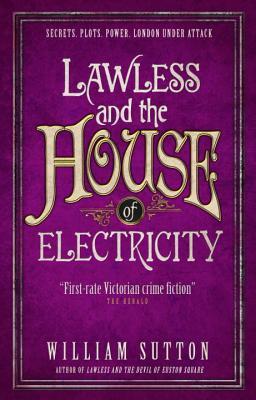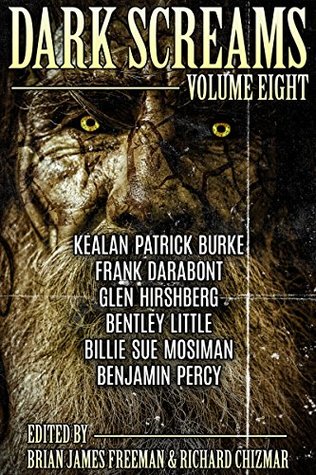by MK French
A couple of months ago, we featured an
excerpt from William Sutton's latest book in the Lawless series. Today, I review all three books in his Victoria crime series.
Amazon affiliate links are used on this site. Free books were provided for an honest review.
Lawless and the Devil of Euston Square (Lawless Book 1) by William Sutton
 |
May 2016; Titan Books; 978-1785650093
ebook, print (464 pages); historical, crime |
Novice detective Campbell Lawless is new to Scotland Yard after helping out with a burst hydraulic pump in the winter of 1859. From there, he discovers more about the underbelly of London, the poor and the elite, and uncovers a plot involving revolutionaries, actresses, and even the royal family. Much of his inquiry has to do with Berwick Skelton, a poor man that became an activist that had disappeared. Finding him forces Lawless to unravel a far more complex network of people and secrets than he thought was possible.
The novel is a Victorian crime drama and is written in that style and with that pacing. The language used reflects the period, and the story is told mostly through Lawless' point of view, with accents from newspapers, quotes from notable figures of the day (Charles Dickens and Karl Marx especially).
It's very slow going, and the book is just over 500 pages. This allows you get a feel for the time period and the characters, but it's very dragged out in a lot of places. Yes, the entire book spans over three years, but at some points in the book, it really feels like it and there's not much action or investigation going on.
It definitely gives you a fantastic feel for the time period, and you get a chance to see how investigations were done. There is so much detail in here, you really get immersed in it. If that's the kind of period mystery that you like, this is the book for you.
Buy Lawless and the Devil of Euston Square at Amazon
Lawless and the Flowers of Sin (Lawless Book 2) by William Sutton
 |
July 2016; Titan Books; 978-1785650116
ebook, print (464 pages); historical, crime |
After the events at Euston Square, Detective Lawless continued to work in Scotland Yard. He was assigned a number of drab cases before being reassigned as the Inspector of Vice. In this position, he has to make a tally of all the bordellos in London, and collect the stories of the women who work there. Along the way, he became friends with an elderly musician that established a foundation for fallen women, in an effort to give women an option if they wanted to leave the bordellos. However, powerful men throughout London frequent the higher end bordellos and bookshops, and have no interest in letting Lawless unravel the network they painstakingly put together.
This novel refers to some events in the first one, such as Lawless's resentment at being stuck doing filing and paperwork after he had unraveled the plot of the first mystery. He isn't very interested in this new position as Inspector of Vice, but he makes a number of friends (of sorts) with a few of the prostitutes and honestly cares what happens to them. A great number of his illusions are shattered in the process, which leads him to look further into how a good number of them fell into the oldest profession.
There is no detail given regarding some of the stories, so we're left to fill in the blanks with our own dirty imagination. It's a clever way to go about it because even the outlines of stories and the hints that are given can be too heartrending to imagine someone actually living through.
It's just as atmospheric as the first novel and takes us further into the underbelly of Victorian London.
The story moves along much faster here and doesn't feel as weighed down. The final sections explain the tangled stories of the musician and the woman Lawless saw him with, and seem to serve as an epilogue of sorts. It doesn't explain any future events, not like the final sections of the first novel, but is a gentler conclusion to the tale.
Buy Lawless and the Flowers of Sin at Amazon
Lawless and the House of Electricity (Lawless Book 3) by William Sutton
 |
August 2017; Titan Books; 978-1785650130
ebook, print (464 pages); historical, crime |
Sergeant Campbell Lawless investigates a body that was found on a ship after being dead for years, as well as a series of explosions that don't initially seem connected. The Earl of Roxbury manufactures weapons for England, and the tensions between England and Europe are mounting. Lawless is sent by the Home Office to investigate the explosions, so he sends the ex-street urchin Molly to Roxbury's estate to investigate his estate, which includes a number of experiments, electrical contraptions, and a number of scientists working with him.
Instead of being primarily Lawless's point of view with a smattering of telegrams or newspaper clippings, the story here bounces between his point of view, Molly's letters and telegrams, and some missives from Ruth Villiers. Because Lawless has to stay in London, this helps us see what happens at Roxbury's estate. Just as in the second novel in this series, a lot of it is then left to our imagination from the hints given in the text.
The alternating texts do reveal the fact that there are two mysteries at play at once, some of which can be guessed ahead of time.
This story is just as tangled as prior ones, yet feels less oppressively dense. Once the stories fully unfold in the later sections of the novel, they're revealed to be almost gothic in nature. I found this novel to be the most enjoyable of the three.
Buy Lawless and the House of Electricity at Amazon
Born and raised in New York City, M.K. French started writing stories when very young, dreaming of different worlds and places to visit. She always had an interest in folklore, fairy tales, and the macabre, which has definitely influenced her work. She currently lives in the Midwest with her husband, three young children, and golden retriever.
Get even more book news in your inbox, sign up today! Girl Who Reads is an Amazon advertising affiliate; a small commission is earned when purchases are made at Amazon using any Amazon links on this site. Thank you for supporting Girl Who Reads.





.png)





























